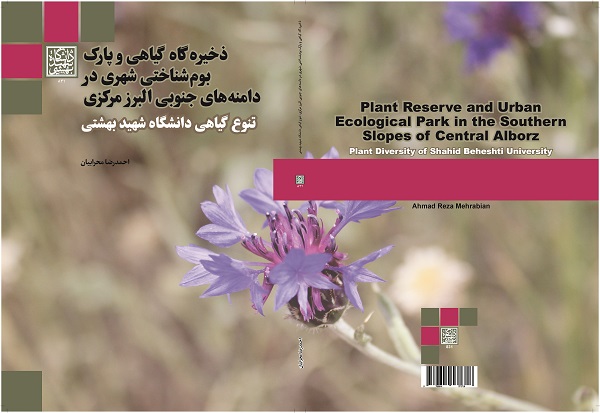
The book "Plant Reserve and Urban Ecological Park in the Southern Slopes of Central Alborz: Plant Diversity of Shahid Beheshti University", written by Dr. Ahmad Reza Mehrabian, associate professor of the Faculty of Life Sciences and Biotechnology, has been published recently by SBU Press in 200 pages.
The book describes the ecological and botanical features of one of the leading university campuses in the country and one of the surviving plant reserves in the southern slopes of Central Alborz.
Shahid Beheshti University, thanks to its location in the southern slopes of Central Alborz, has a very rich and diverse vegetation as one of the important areas of plant diversity and endemism of Iran. In the central campus of Shahid Beheshti University, there are a total of 392 plant species, including 247 wildling ones and 145 planted ones. The plants of the university include different kinds of medicinal, endemic and ornamental plants, wild relatives of agricultural products, nectar-producing and pollinating plants, endangered, representative, supporting and key plants, and alien and invasive plants. Pistachio, Taxus baccata, Alnus, Acer velutinum, Tilia, Ficus carica, walnut, Elaeagnus angustifolia, platycladus orientalis, Mediterranean cypress and persimmon are among the native species planted in the green space of the university. Some wildling species of Central Alborz region such as Celtis australis, Colutea buhsei Boiss, Tilia, sumac, persimmon, and Rosa canina can be seen in some ecological niches of the university. Unfortunately, with the changes in land use, including the construction of buildings and roads, and the expansion of green space, the natural vegetation of the university has undergone extensive changes, and the native vegetation is often located as separate pieces in different parts of the university. Therefore, the ecological restoration of this habitat through the protection of natural sequences, restoration of habitats and reintroduction of species is of particular importance, and the use of ecological models is recommended for planting green space species. The author hopes that the book will be practical for researchers in the fields of biology, landscape architecture, agriculture, environment, as well as nature lovers.


